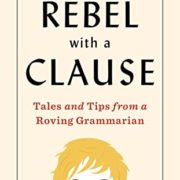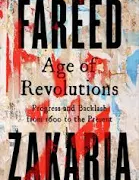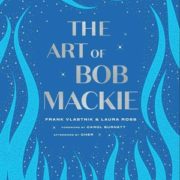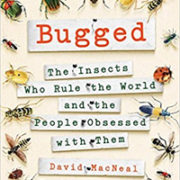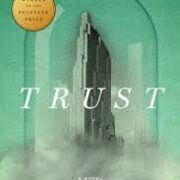The Broken Heart of America: St. Louis and the Violent History of the United States by Walter Johnson
History runs through St. Louis like a current.
It’s downtown as tourists spill around the Old Federal Courthouse—where the infamous Dred Scott case began—on their way to the glinting Gateway Arch, the national monument to Western Expansion, to empire. It flows westward to Forest Park, site of the 1904 World’s Fair, and through the architectural grandeur of surrounding houses. Wending northward yields a scarred history with dilapidated red brick houses and embattled residents. The transition is striking, leaving even the most casual of observers to ask: What happened to St. Louis?
Walter Johnson, author of The Broken Heart of America: St. Louis and the Violent History of the United States, has some answers. From the book’s subtitle, it doesn’t take much to conjecture that his answers are far from any feel-good musings over a once halcyon St. Louis. If you want a narrative that waxes poetic about, say, the St. Louis Cardinals as it relates to the city’s history, look elsewhere. What Johnson, a Harvard professor and native Missourian, does provide is a deep look at St. Louis’s racial and political economy history. A book with resounding vitality, it is, in a word, incendiary.
St. Louis was the early republic’s long reach westward. It became the outpost where William Clark (of Lewis and Clark), serving as superintendent of Indian Affairs, oversaw treaties that ceded over 419 million acres to the United States. Still, this did not stop white settlers from calling him a “race traitor” after he ordered the removal of several hundred settlers along the Arkansas River to avoid conflict on Indian land. They refused the order and he was swiftly removed from office.
Such settlers found an ally in Senator Thomas Hart Benton, a man who sounded “like an angry god in love with his own voice.” Johnson brands Benton as one of the many “second-chance strivers” who made their way to Missouri because they missed making their fortunes either back East or down South. Total Indian removal to make way for white expansion was the order of the day. (Or, as Johnson puts it, “Genocide was the vanguard of empire.”) And St. Louis housed the key garrison. The legendary names we know from the Civil War (Grant, Lee, Longstreet, Sherman) spent their early military careers as Indian fighters stationed out of St. Louis.
This new influx of white inhabitants also had little use for slaveholders as they owned a potential impediment to white labor: slaves. St. Louis became fiercely anti-black and the site of the nation’s first recorded lynching. In 1836, just hours after disembarking a steamship, a free black man was accused of murder and then burned alive behind the Federal Courthouse. This view that blacks were essentially disposable was solidified by the U.S. Supreme Court in the 1857 Dred Scott case, Chief Justice Taney writing that blacks (whether free or enslaved) “had no rights which the white man was bound to respect.”
To be sure, St. Louis had its paradoxes. There was a relatively small slave population. Yet it had one of largest slave markets in the country. There was a white population that didn’t particularly care whether one owned a slave or not so long as said slave (and slave owner) didn’t impede their quest for property. The mid-1800s were complicated further with the arrival of Germans fleeing the Revolutions of 1848. And since many of them were Marxists, they believed private property should not exist at all, certainly not human chattel. As such, when the time came, quite a few Germans joined the Union Army. There’s a twenty-foot statue of Franz Sigel in Forest Park today. Sigel was a German-born St. Louisan who became a distinguished Union general. He was also, Johnson mordantly states, “a stone-cold communist.”
Following the war, Walt Whitman and William Tecumseh Sherman advocated moving the nation’s capital to St. Louis. And there was a brief period of unity between white and black laborers during the St. Louis General Strike of 1877, the first such strike in the nation. However, such solidarity had long since evaporated when, a few decades later, St. Louis passed its first segregation ordinance. Still, downtown St. Louis was full of verve and was nationally known as a “sporting city” (full innuendo). At the turn of the century, ragtime music, invented by black musicians, thundered out of St. Louis, the nation’s fourth most populous city.
But you wouldn’t find ragtime at the 1904 World’s Fair. (It was banned.) You would, however, find a spectacle that’s hard to fathom. In Forest Park, visitors could pay a nickel and pose for a photo with Geronimo. There was a “human zoo,” where Filipinos and Pygmies lived. During colder days, white ticket holders would throw rocks at their huts so that they would come out and perform. A young T.S. Eliot often bought daily tickets to the fair. A visitor might glimpse Mark Twain sitting down to dinner with Henry James.
Much of the twentieth century, according to Johnson, was a calculated effort to engineer a city that encouraged white flight to the suburbs (back when it was thought that the city would merge administratively with St. Louis County). The land where the Arch stands today was once seen by many as the “Greenwich Village of the West.” This mattered little to city officials, as it presented a “redevelopment” plan for the area. The 1935 bond issue passed overwhelmingly and 40 square blocks were bulldozed. (Yet it was soon revealed that the plan was a speculative real estate venture.) Interstates were expanded to encourage white mobility and racial restrictive covenants were common.
As with so many present-day municipalities, St. Louis struggles with viable ways to raise revenue. So enters the now ubiquitous TIF districts, where municipalities essentially have to “give it away.” Even if an area is blighted and developed, the resulting sales tax revenue comes at the expense of stagnant property tax levies. The result: perpetually underfunded schools.
Some may push back at Johnson’s stressing racial enmity as a constant thread running through St. Louis’s history. However, after reading of the 1917 East St. Louis Massacre, it seems that the onus shifts to having to explain how race was not a driving historical force. Officially, the death count is around 40. But historians believe the number is in the hundreds. (It also left 6,000 blacks homeless.) After the massacre, a congressional report concluded that the companies operating in East St. Louis cared nothing for the civic life of the area.
Johnson thoroughly unpacks the Ferguson of 2014 within the context of the Michael Brown shooting. There are reams of reports detailing how the city, via the police, went revenue-farming on poor black residents. But Johnson’s ire is focused on what was not included: the structural racism found in the area. (He notes that such racism is not unique to St. Louis; as we have seen, it’s fixed in many other cities as well.) This book is his response.
The St. Louis of today is one where a poor black child born in the North will have a life expectancy that is eighteen years shorter than a white child born in a nearby suburb. Such grim realities, Johnson notes, have an impact, and grassroots are forming. The challenges are legionnaire, but still they try. Johnson stops by a high school and watches a track meet. Even after the track coach’s son was shot dead by a police officer in 2017, she’s still there, trying. The kids are still out there running, some of them literally for their lives.


